Abstract
How is your home/apartment plumbed? What to do when the sink is dripping all night? How to deal with a clogged drain. Let’s explore how to deal with these issues, and when to call a plumber.
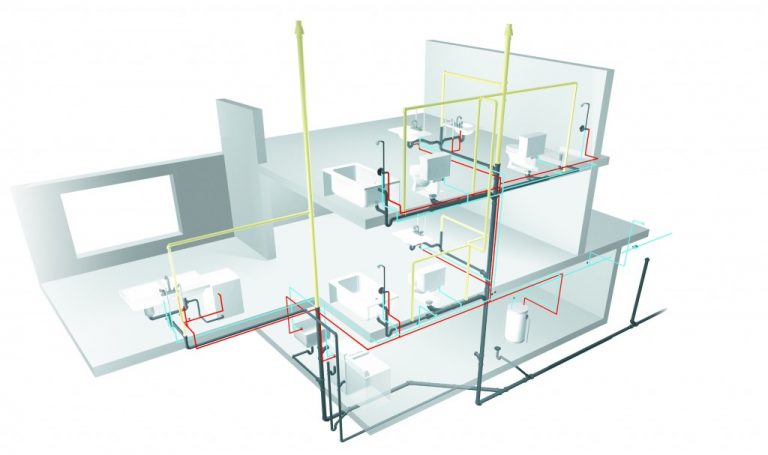
Overview of your plumbing
The plumbing system is broken up into two parts, input and output. Lets start with and overview.
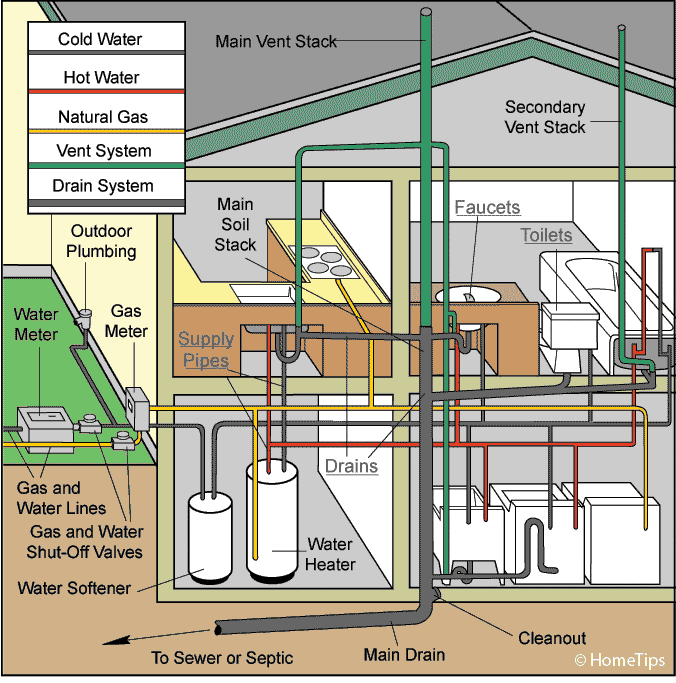
Input plumbing
The input starts with the water entering the house. If you live in a city or town, this begins with a water pipe from the street through a water meter and shutoff valve. If you live in the country, or do not have access to town water your input will come from a well.
Well Water
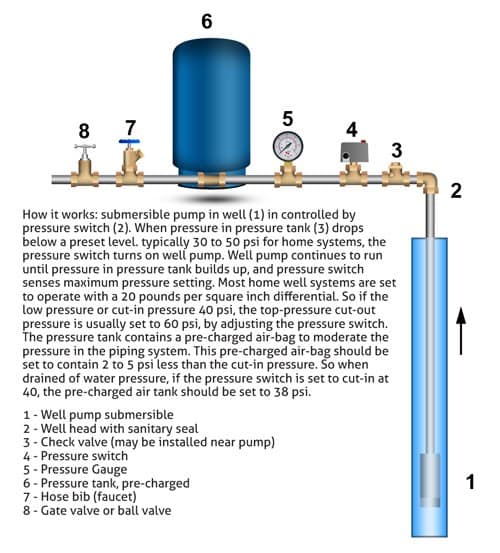
With a well you pump water from the aquifer through some pipes into the house. The water pressure is created by a submerged pump that feeds water into a pressure tank. There is a pressure switch that turns the well pump on and off based on it’s settings. Typically the pressure varies between 30 and 50 PSI of pressure.
When the pressure in the tank gets below 30 PSI the pump turn on, once it reaches 50 PSI the pump switches off. The pressure tank works as a shock absorber compressing a bladder as it fills, and releasing the pressure as the water is used
Water Heaters
When water pipes are run though a house or apartment, they typically include two lines. One line carries cold water, the other hot. So each domicile has at least one water heater.
Water heaters use some form of energy to raise the temperature of the water. Some systems use the heating system to heat the water and store it in a holding tank. Some systems have a water heater that is separate from the heating system but still stores a quantity of hot water. And some residences have instant water heaters that have no holding tank, but heat the water on demand. In all cases the cold water is the input the output hot water is carried in a separate set of pipes.
Some facilities such as the water heater, toilets, and outdoor faucets are only fed cold water, so they only need one faucet.
Sinks, showers, and tubs
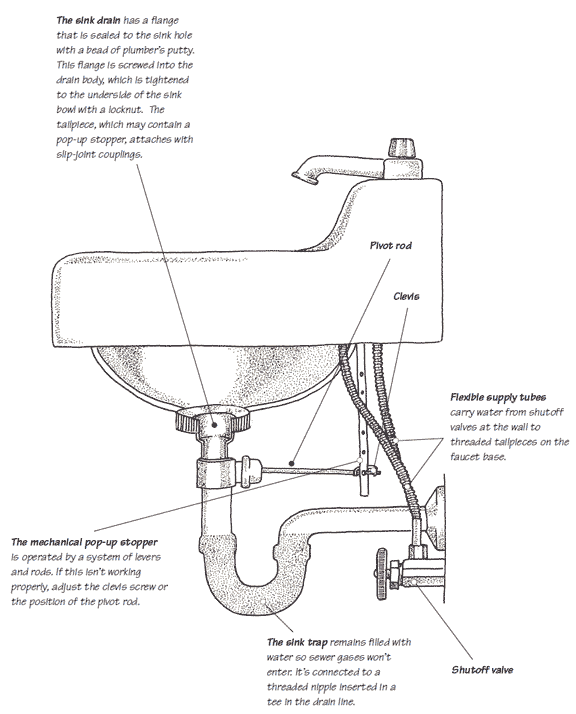
The plumbing for all these items is pretty similar. The water risers bring the hot and cold water into the room. Where the riser emerges from the wall is typically a shutoff valve. There is then a short flexable pipe that connects the shutoff valve to the faucet. This arrangement make it easy to replace or fix a faucet since you can shut off the water without shutting off the whole house. With a tub or a shower the shut off valves will be inside the wall, but some houses do not have shutoffs for the tubs and showers.
Water Valves
There are several type of water valves used in the home. I will discuss the most common types.
Shut off Valves
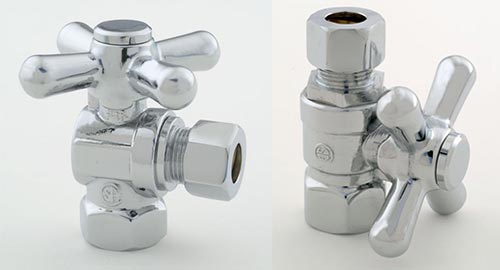
This is the type of valve you will often find under a sink. They are usually a globe type of valve.
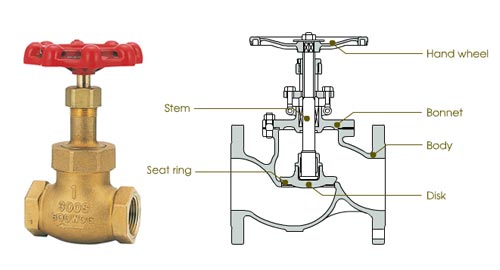
You will notice that this has a disk or washer in it. When these leak the problem is often that the washer or disk needs to be replaced.
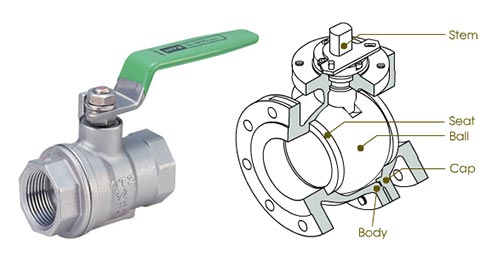
This is the type of valve used for shutoff of water feeds. You will commonly find them near water pumps, or other major input feeds. They are simple to turn on and off, and seldomly fail.
Single lever Faucets
Today it is common to have single lever faucets in the kitchen and sometimes bathrooms. These faucets typically come in two types ball and cartridge.
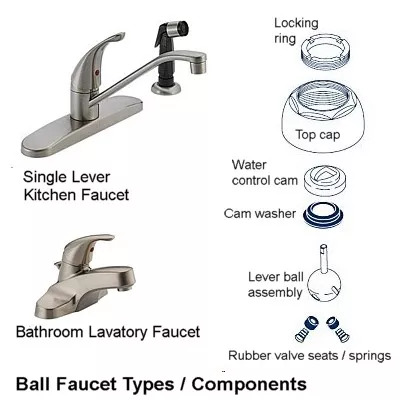
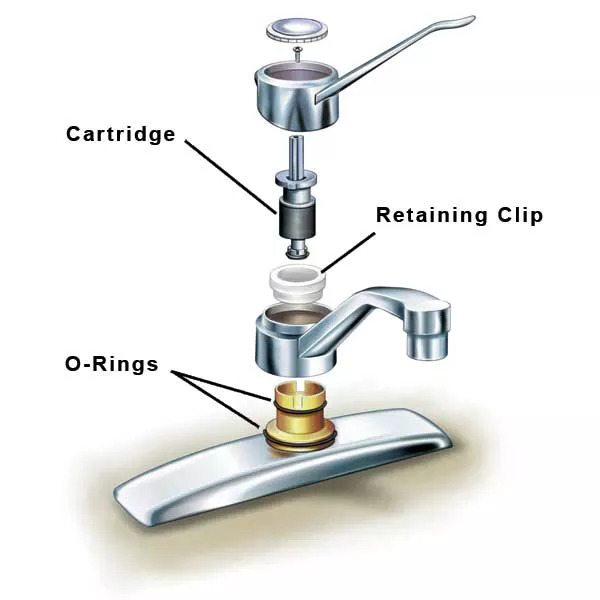
These single handle faucets often do not fail, and when they do, they can be repaired with the right parts and some hand tools.
Output Plumbing
Once we get the water into the house, we need to get it back out. For most city dwellers this only involves sending it down the sewer line to the town water treatment plant. But for those in the country the process is a bit more complex.
Septic Systems

The conventional system consists of a septic tank, when the waste brakes down due to bacteria. And a leach field where the water soaks back into the ground.
A properly maintain septic system can handle the waste from a home for a number of years with little maintenance. It is recommended that the septic tank get pumped out every 5 years or so. Although many people wait much longer which can cause damage to the system.
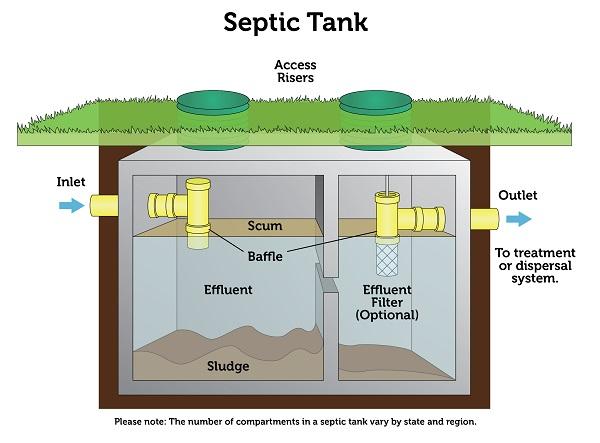
The basic operation of the tank is to allow the waste to be broken down by bacteria in the tank. The liquid, mostly water, is carried off to the leach field where it soaks back into the ground. The ground provides a filter system for the liquid as it soaks back into the water table.
Drain Lines
Each appliance in the house that dispenses water also needs a drain.
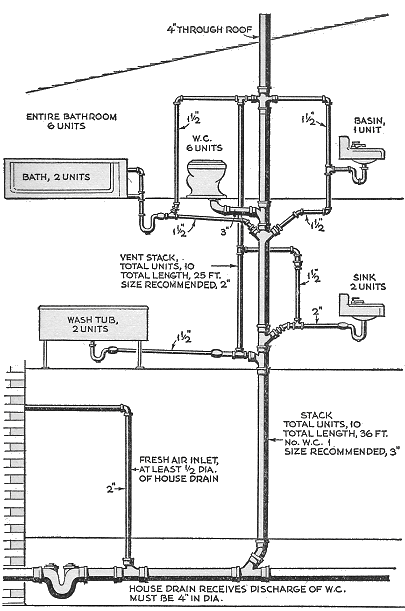
There are two types of drain lines, one is the main line, which is a 4 inch diameter line that collect all the outputs and caries them to the town sewer line or the septic tank.
Ths other are the sink drains. These carry water from a sink, tub, shower, washing machine, or dish washer to the main line.
Traps
As you all know a sewer line stinks. Since we do not want that smell in our homes, we need a method of keeping the smells in the pipes and not releasing it into the house. This function is performed by a trap.
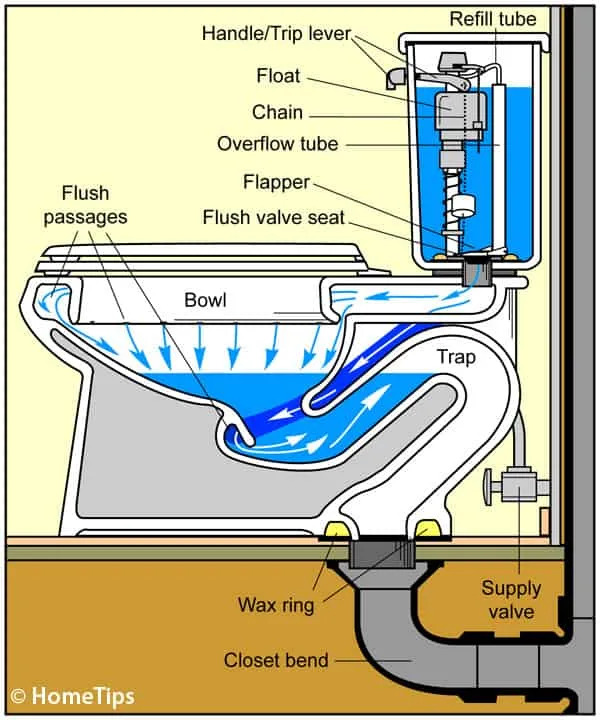
You can see how the toilet works here. The water from the tank in the back is dumped into the bowl, where it flushes the contents through the S trap and into the drain pipe.
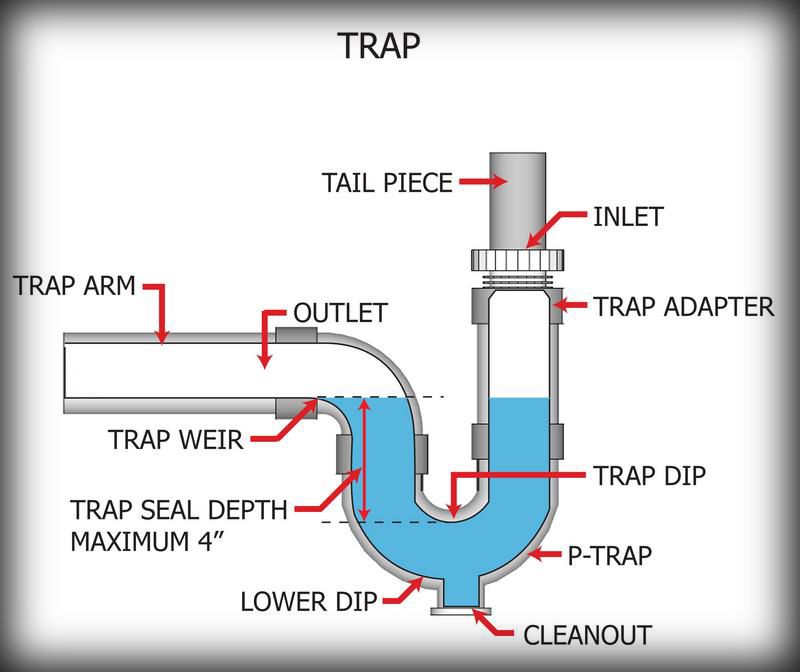
This is the type of water trap used on most sinks. The pipe is only 1 1/2 inch diameter.
How to Fix plumbing issues
Plumbing problems are not uncommon in most homes and apartments. But with a few simple tools plus a trip to the hardware store you can fix many of them yourself.
Lets look at a few of the problems and how to address them.
Leaky Faucet
This is often one of the most common repairs. Here is a good explanation of How to Fix a Leaky Faucet.
Toilet that keep running
I find another common problem is a toilet that either won’t flush or keeps running all the time. Both of these issues involve the tank on the back of the toilet.
This is a fairly easy problem to fix with a little patience and simple tools.
Clogged Drain
Before we start taking apart the pipes for a clogged drain, you can start by using natural ingredients on a sink drain. Here are some suggestions on how to use natural ingredients. Trying Natural Solvents.
If this method does not work, the next step is to try to clean out the P-Trap below the sink. Snaking the Pipes. This method is good for checking if the blockage is at the sink or further down the drain. If this method doesn’t work, then you are looking at having someone use a drain snake.
Questions
In conclusion there are a number of other plumbing projects we can discuss if you want. Topics such as how to install a sink, or a new toilet. How to replace a faucet set, or convert from a two handle faucet to a single handle faucet.
Written by John F. Moore
Last Revised: Mon 15 Feb 2021 01:49:39 PM EST

This work is licensed under a Creative Commons Attribution-NonCommercial-ShareAlike 3.0 Unported License.
